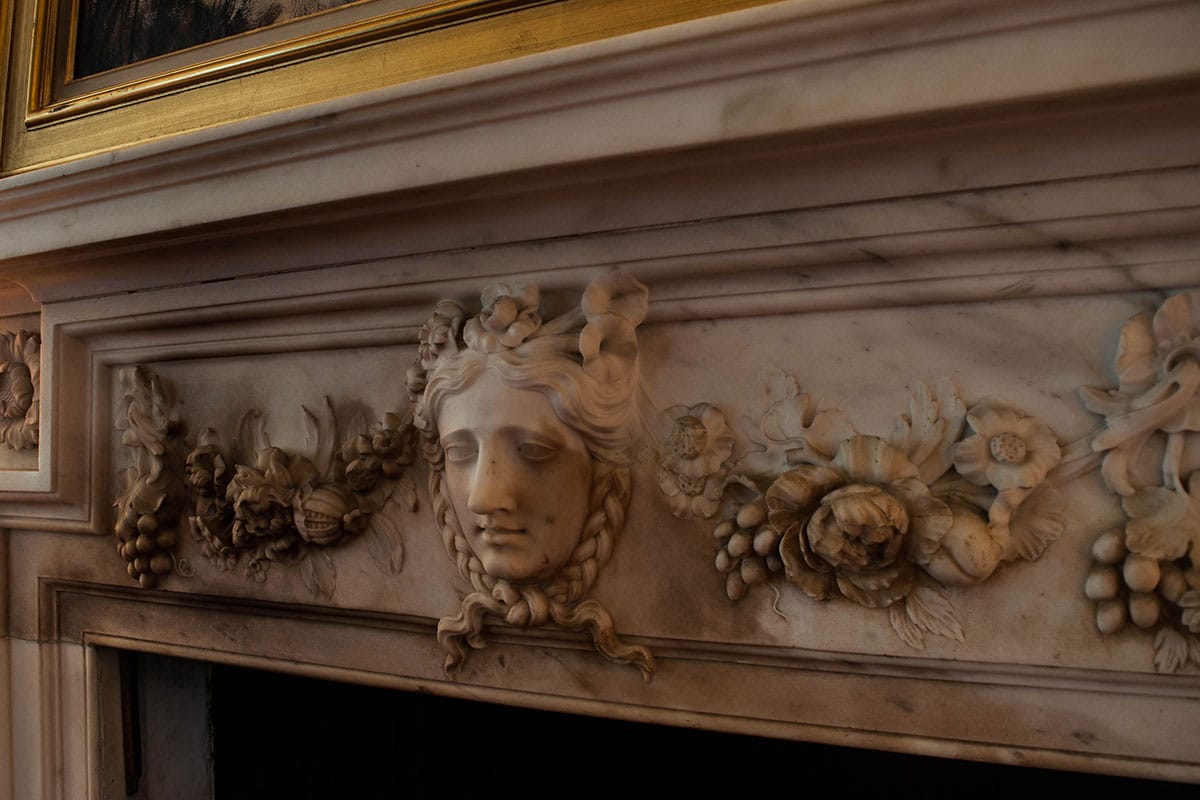RESTORATION & CONSERVATION SERVICES | DECORATIVE ARTS & OBJECTS | STONE RESTORATION
Stone Restoration
Our stone restoration department has the skill to carry out the most complicated stone restoration techniques to the highest standards.
Stone restoration treatments include conservation cleaning, stone carving and casting missing sections or elements. Our ability to colour-match every subtle tonal variation found in stone ensures that our repairs are practically invisible to the naked eye.
In addition to restoring stone artworks and objects, we also apply our specialist stone restoration skills to interior and exterior stone surfaces, including staircases, fire surrounds, floors, columns and mosaic floors, which risk being seriously damaged if handled by anyone other than an experienced professional. Our use of Laponite RD water poultices to successfully clean the external façade of the Garrick Club building in Central London was considered ground-breaking at the time. Our stone restoration department has the knowledge and experience to safely move heavy stone objects, for example church fonts, that can weigh in excess of one and a half tonnes.

Stone Restoration Case Studies
Regency Lava Stone Restoration






Part of the collection of an important stately home, this Regency lava stone vase and cover is attributed to Benjamin Vulliamy (1747-1811), the famous London clockmaker.
It came for stone restoration treatment as an insurance claim. We were instructed to restore this stone vase and cover by Philip Austin of Fine Art Specie Adjusters Ltd (FASA), who has extensive experience of dealing with claims for damaged or lost historic objects and fine art on behalf of insurers.
The vase and cover had previously been poorly restored at some point in its history, which our Head of Stone Restoration replaced as part of a comprehensive stone restoration treatment.
Once all the shattered lava stone fragments had been cleaned, our Head of Stone Restoration used temporary jigs to allow all the component parts of the vase and cover to be bonded back together simultaneously. This approach is often used during stone restoration and in some instances is essential for ensuring correct alignment.
Once the vase and cover were reassembled, our Head of Stone Restoration turned his attention to restoring any missing sections of lava stone. Our Head of Stone Restoration used silicone press moulds to cast accurate epoxy resin replicas of these missing sections, which were then meticulously coloured to match the original lava stone.
Finally, our Head of Stone Restoration carried out minimal retouching along the break edges, keeping as much of the original lava stone surface visible as possible, whilst ensuring a harmonious and visually pleasing effect.
Marble Sculpture | Stone Restoration Project



This marble sculpture came in for stone restoration work because of the cherub’s broken wing. Conscious of the size and weight of the broken element, we drilled the wing and inserted a dowel to strengthen the repair and prevent the likelihood of repeat damage along the point of weakness. The break edges were then carefully bonded together. Any remaining gaps or small missing sections of marble along the repair were filled using conservation-grade materials and the whole area was painstakingly retouched to achieve a result that is virtually flawless to the naked eye.
At the client’s request, the cherub was also cleaned with a poultice to remove the thick layer of dirt that was obscuring the more intricate detailing on the sculpture.
Smoke Damaged Marble Grade II Listed Fireplace | Stone Restoration Project



An internal fault in the flue, resulted in substantial smoke damage to this Grade II Listed 18th Century Henry Flitcroft fire surround in a private London house. Our Head of Stone Restoration carefully removed the abrasive soot using a poultice method to avoid irrevocably scratching the marble. Our Head of Stone Restoration then painstakingly retouched the affected area for a seamless end result.
Broken Marble tazza | Stone Restoration Project



This 19th Century marble tazza came into our stone restoration studio with substantial damage caused by the hasty removal of the tazza during a house fire. Our Head of Stone Restoration started his treatment by thoroughly cleaning all the fragments to remove soot deposits. The cleaned sections were then drilled and dowelled together using stainless steel rods. Finally, our Head of Stone Restoration filled and retouched the repair lines for an extremely discreet restoration that blends in with the veining of the surrounding marble.
19th Century Alabaster Sculpture | Stone Restoration Project









The Rape of Polyxena is arguably the most famous work by Romantic sculptor, Pio Fedi (1815–1892). The marble sculpture, which was unveiled in 1866, is located in the Loggia dei Lanzi in Florence.
This 19th Century copy of the Rape of Polyxena is sculpted in alabaster. It came into our stone restoration studio for extensive restoration work, carried out by our Head of Stone Restoration.
The work had previous poor repairs and losses. A significant part of our treatment involved dismantling the earlier stone restoration and replacing these inferior non-original elements, using conservation-grade materials and reversible techniques.
Our stone restoration started by removing old adhesive to detach the various poorly-carved later applied hands, fingers, toes, as well as the warrior’s sword that had also been replaced.
After carefully studying the lines on the original parts of the alabaster sculpture, and images of Pio Fedi’s sculpture; our Head of Stone Restoration painstakingly carved and finessed new alabaster elements.
The smaller elements were bonded into position; but with the larger sword, a small dowel made from carbon fibre was applied to strengthen the repair and ensure its longevity.
One of the warriors had a long drip run of adhesive, which our Head of Stone Restoration removed and discreetly retouched.
Once restored, the sculpture was waxed, which enhances the appearance of the alabaster and also provides it with an additional protective layer.



